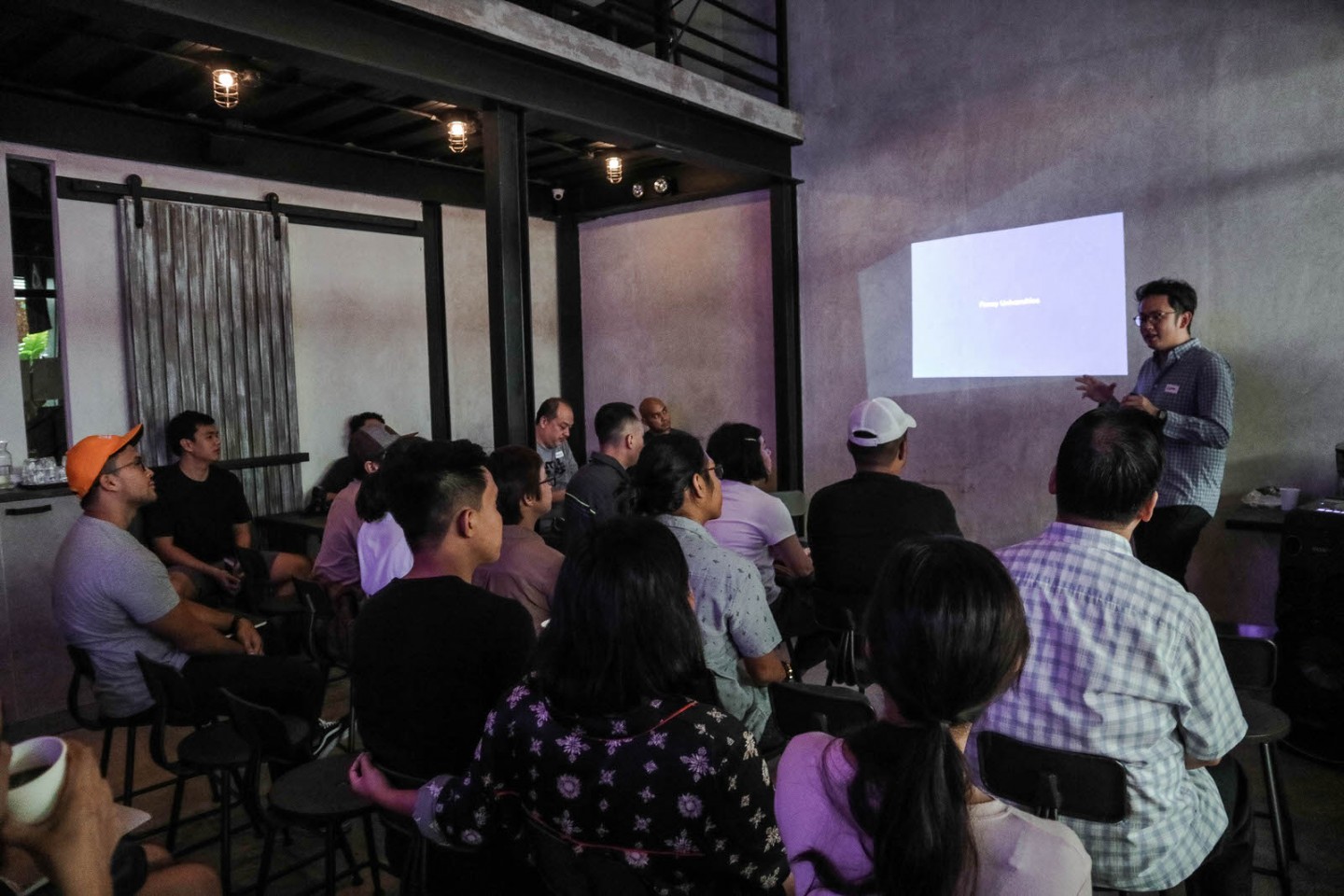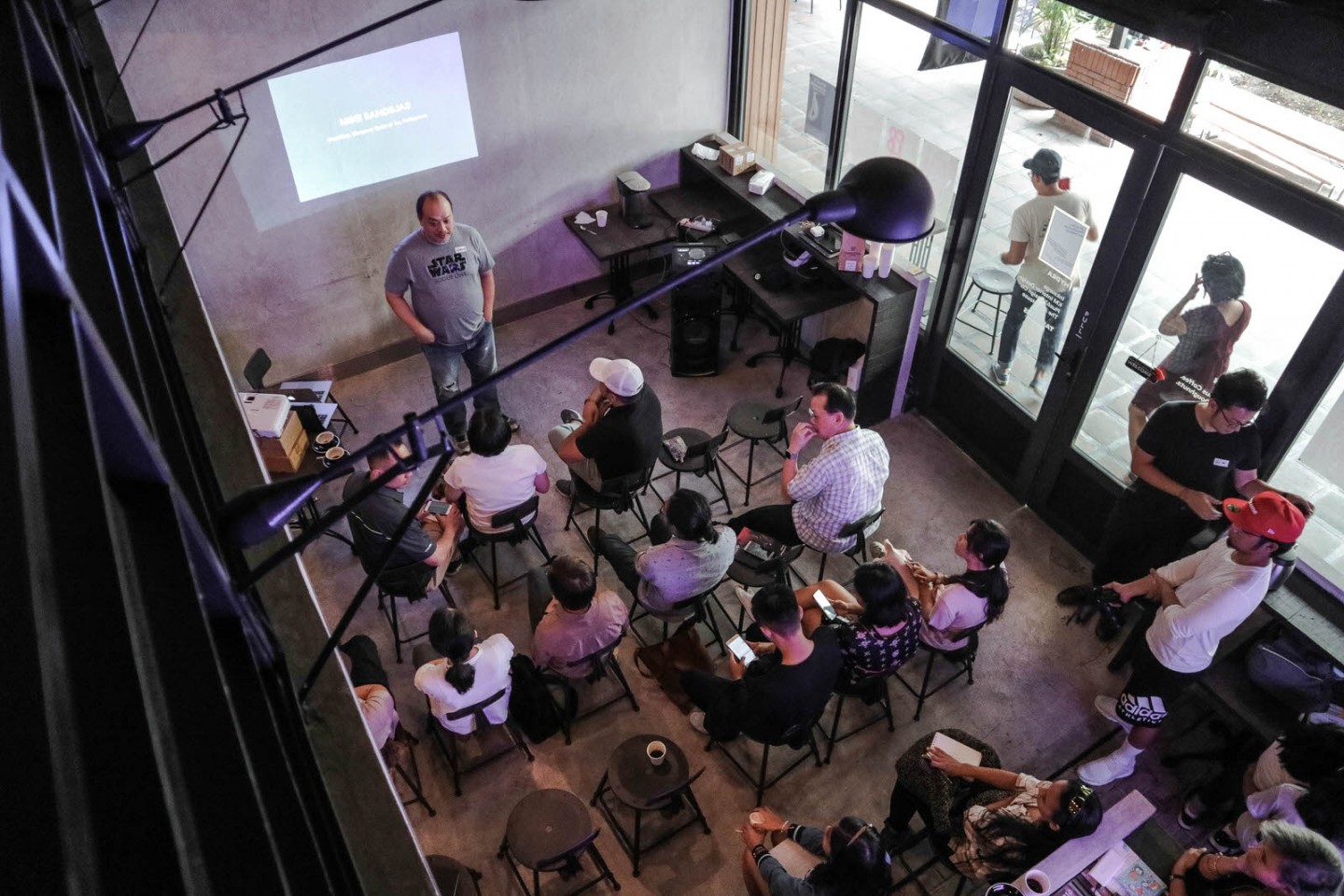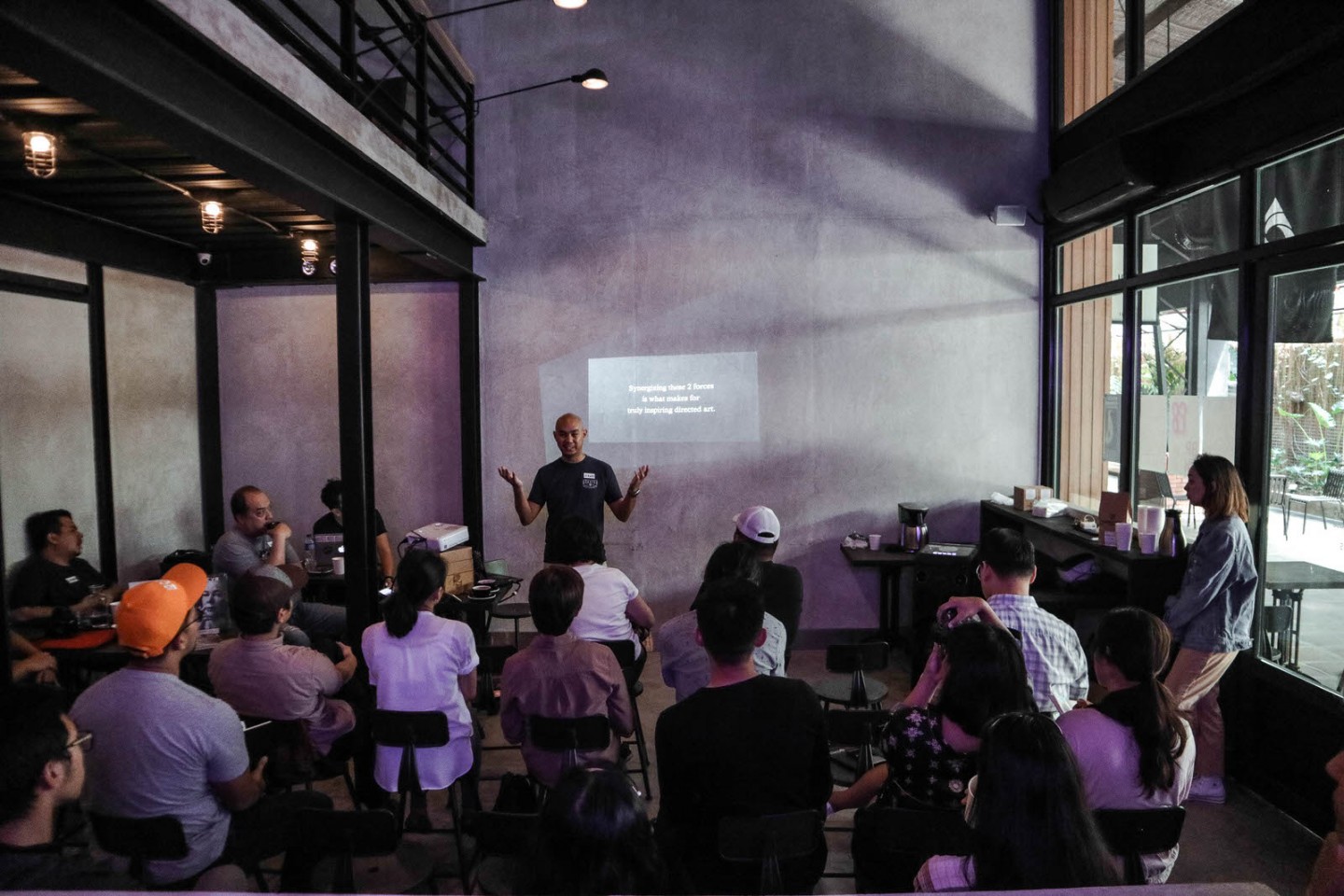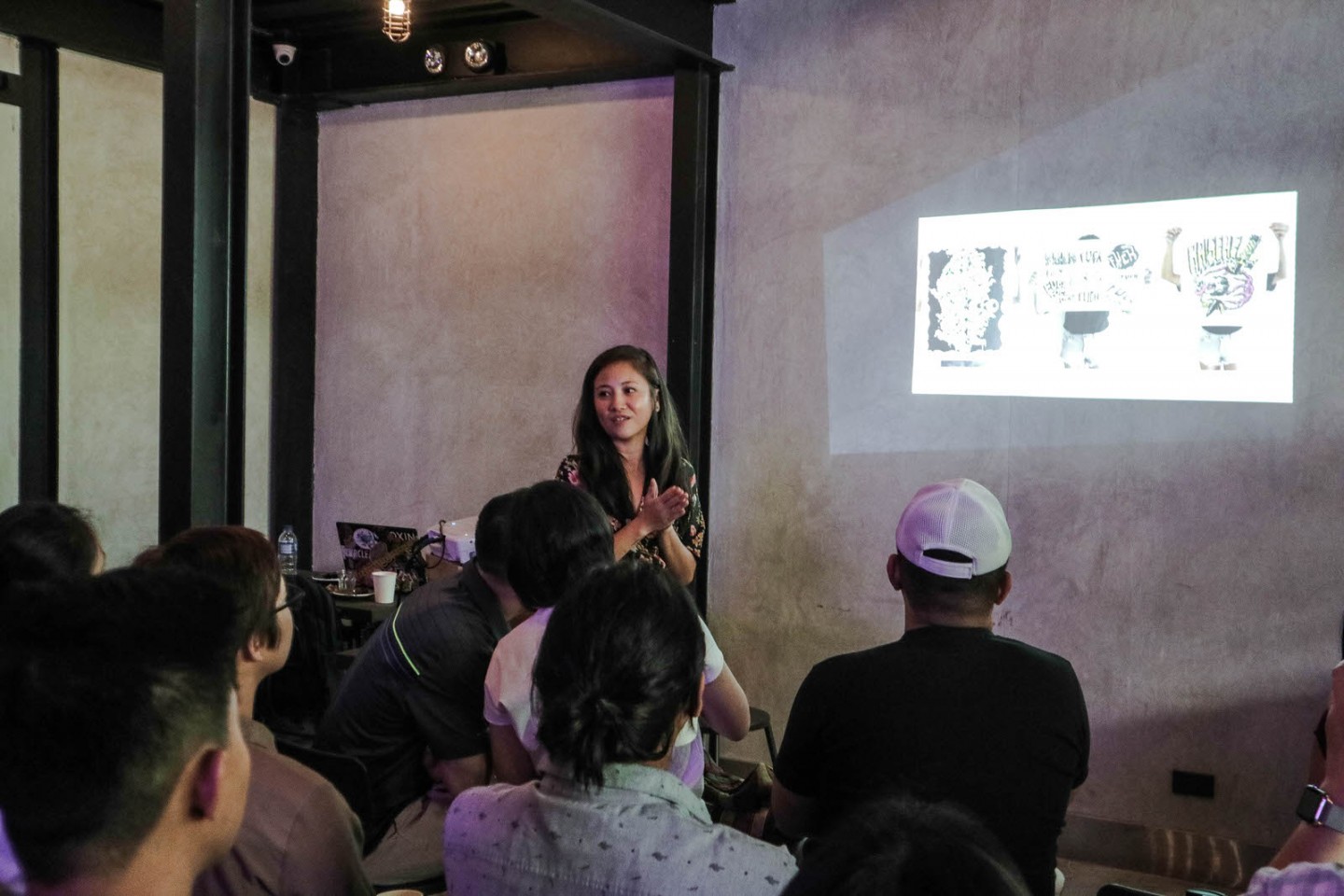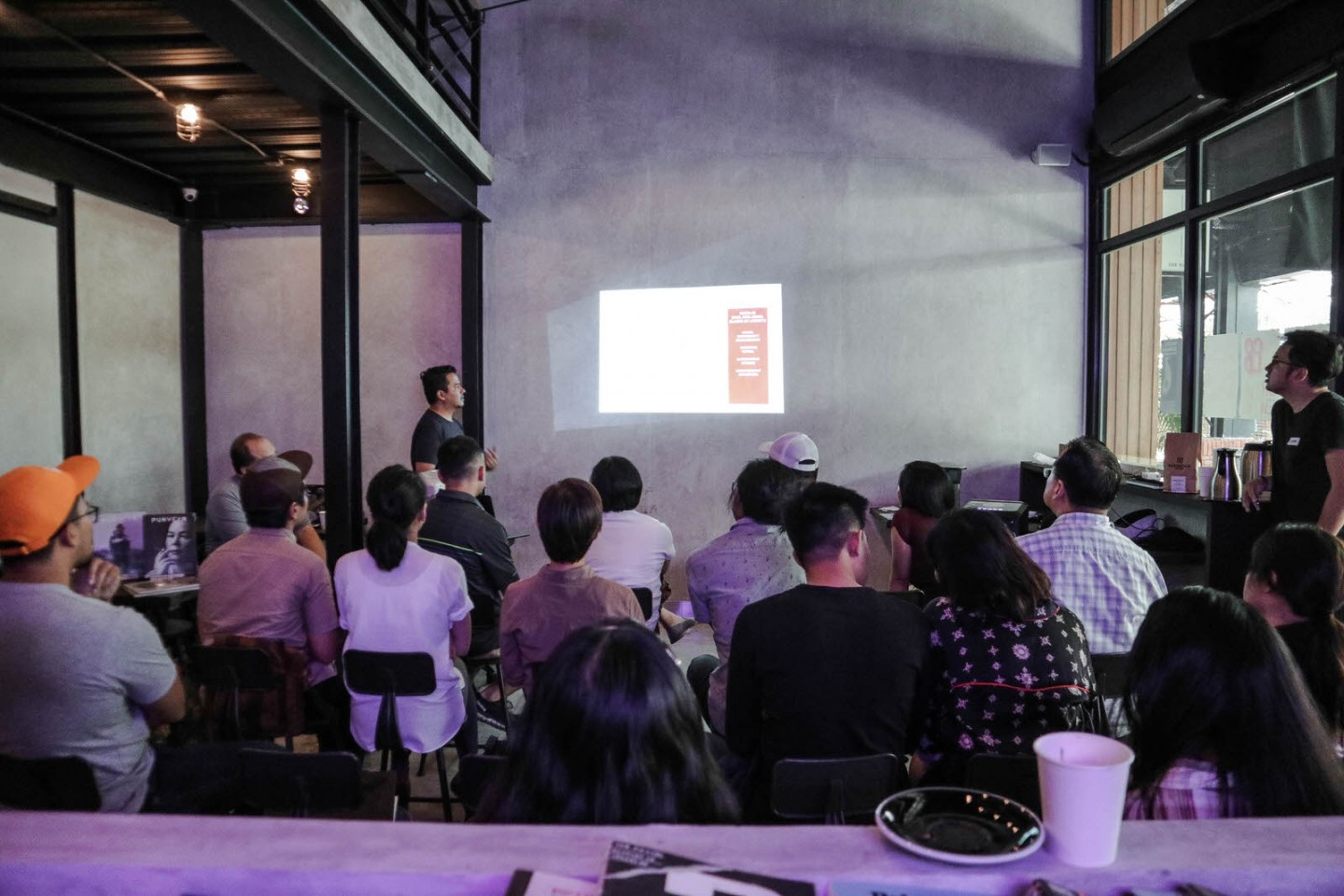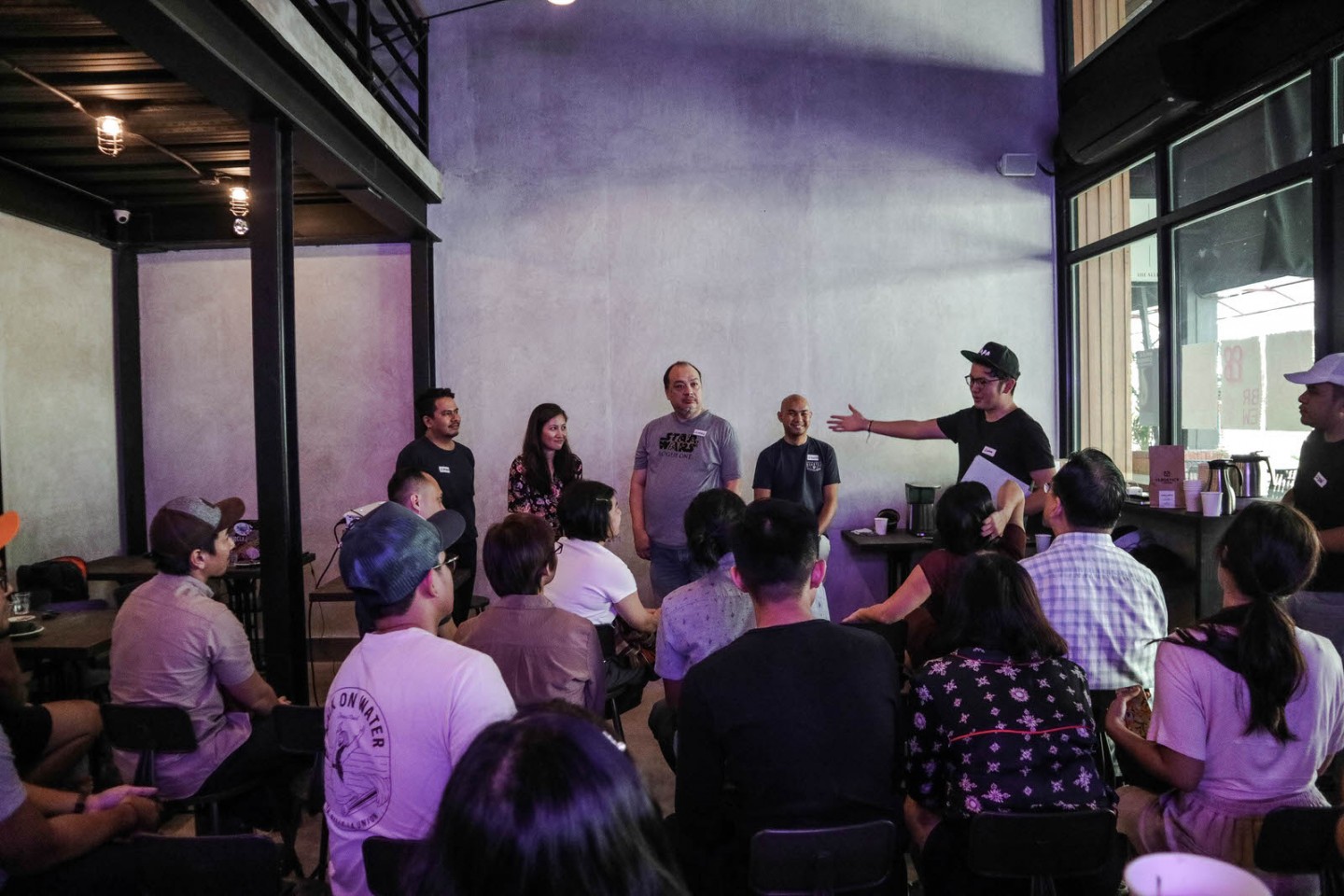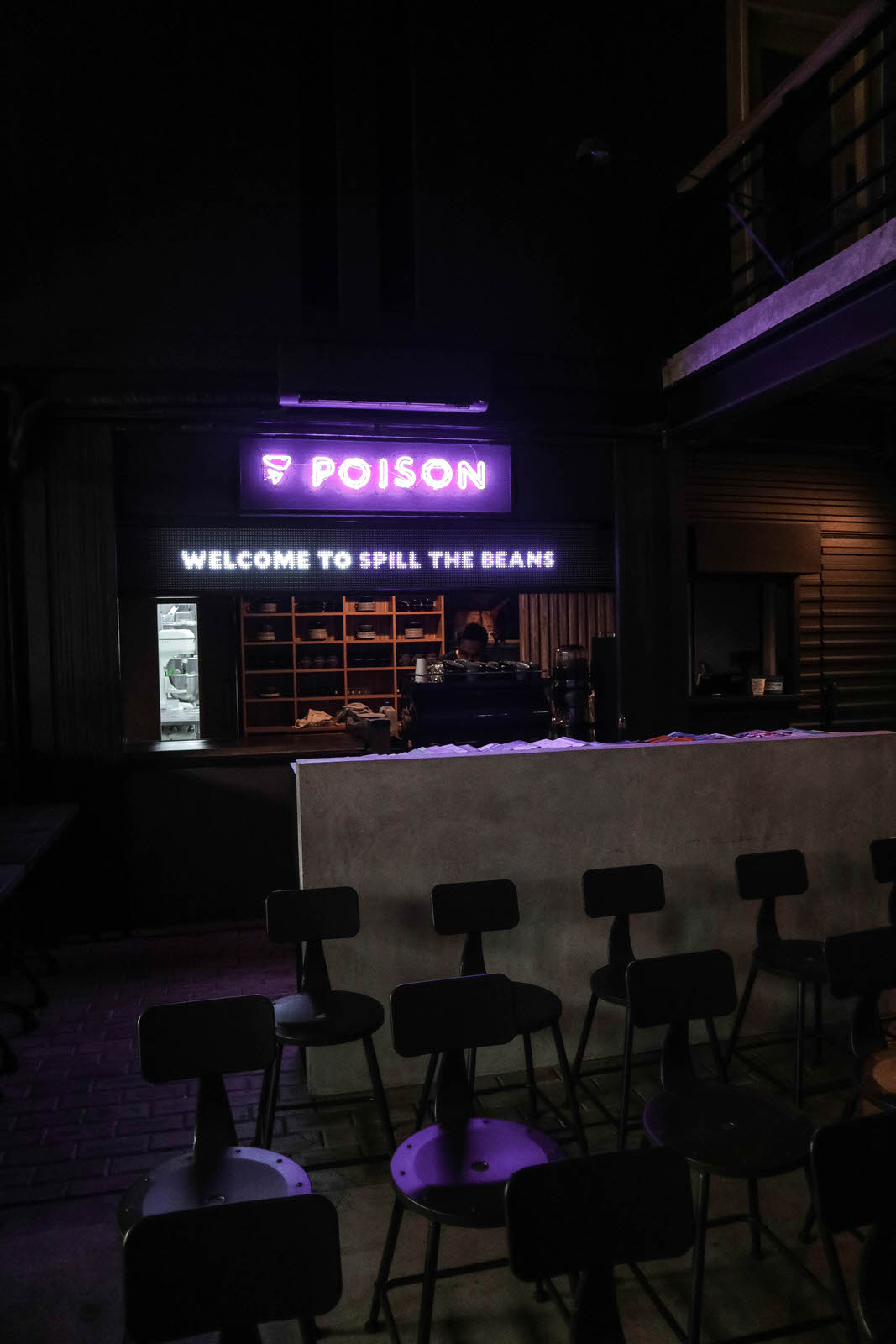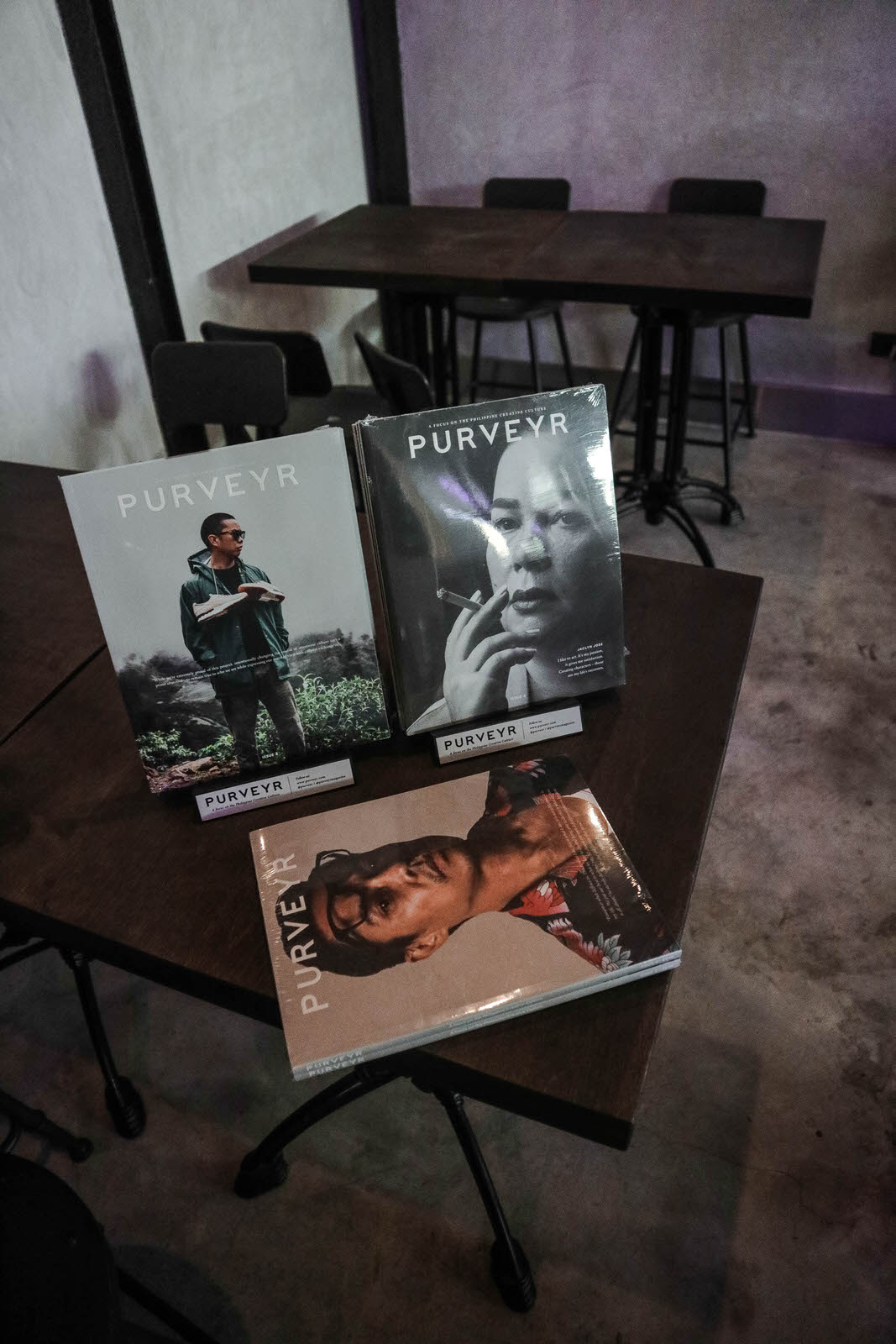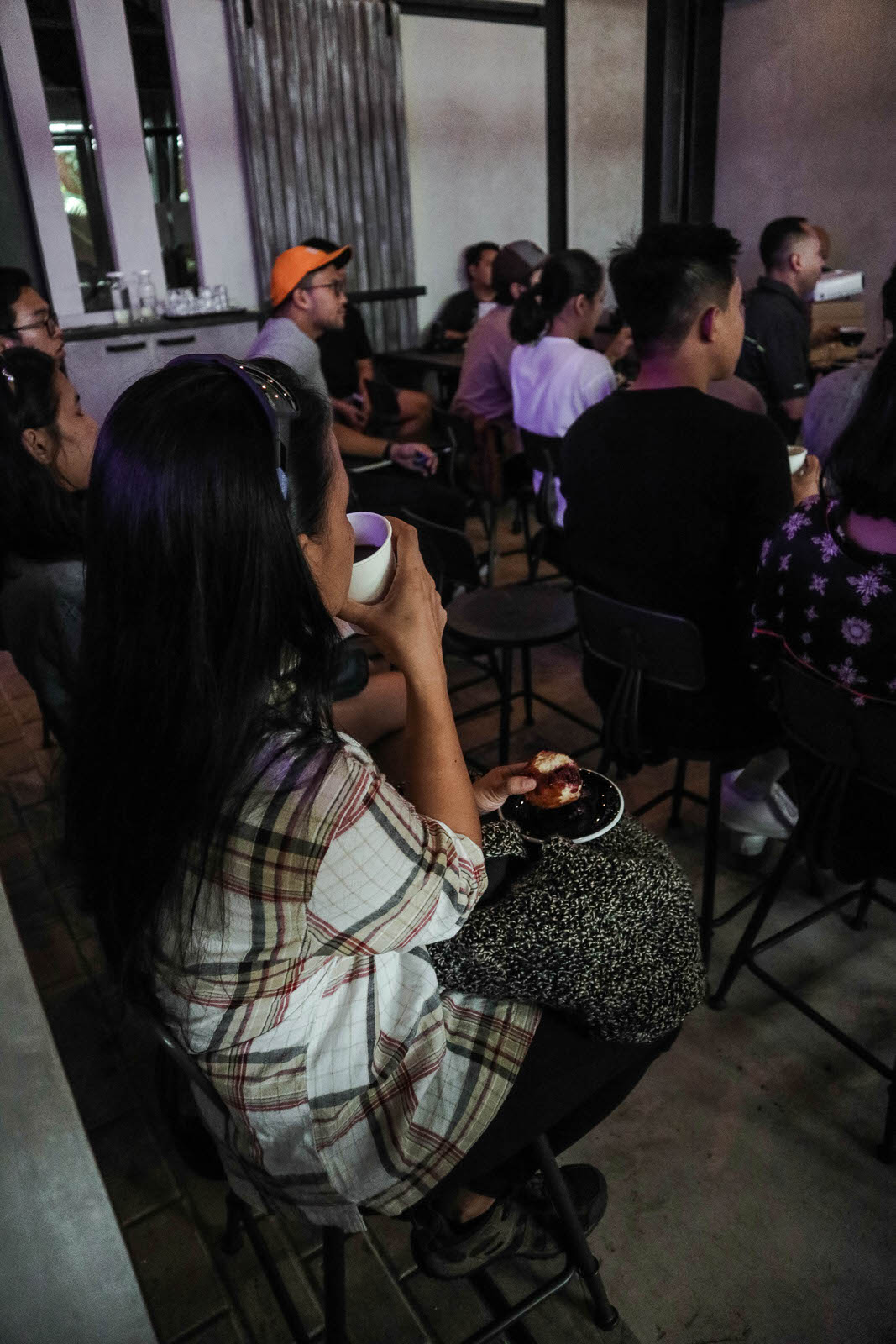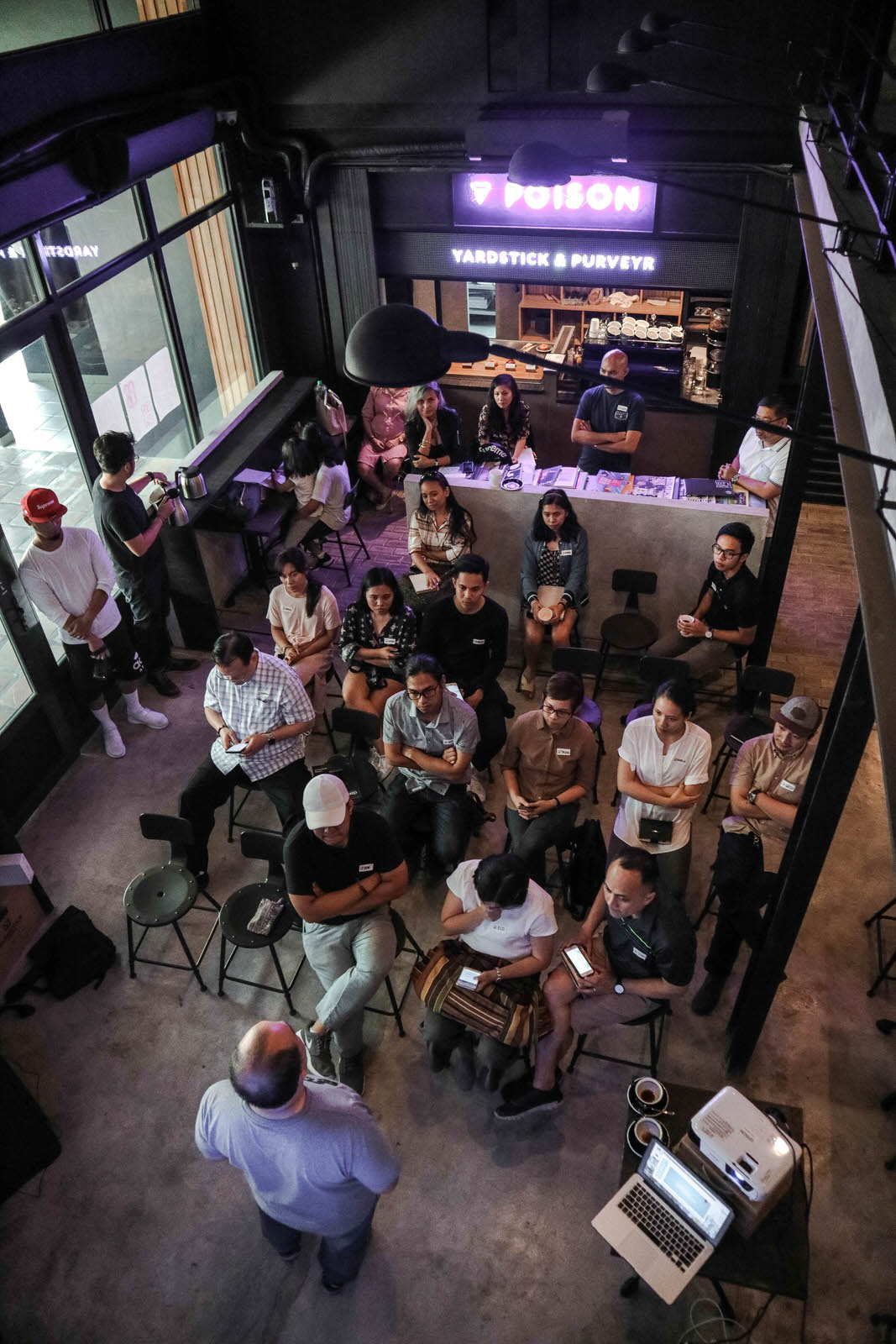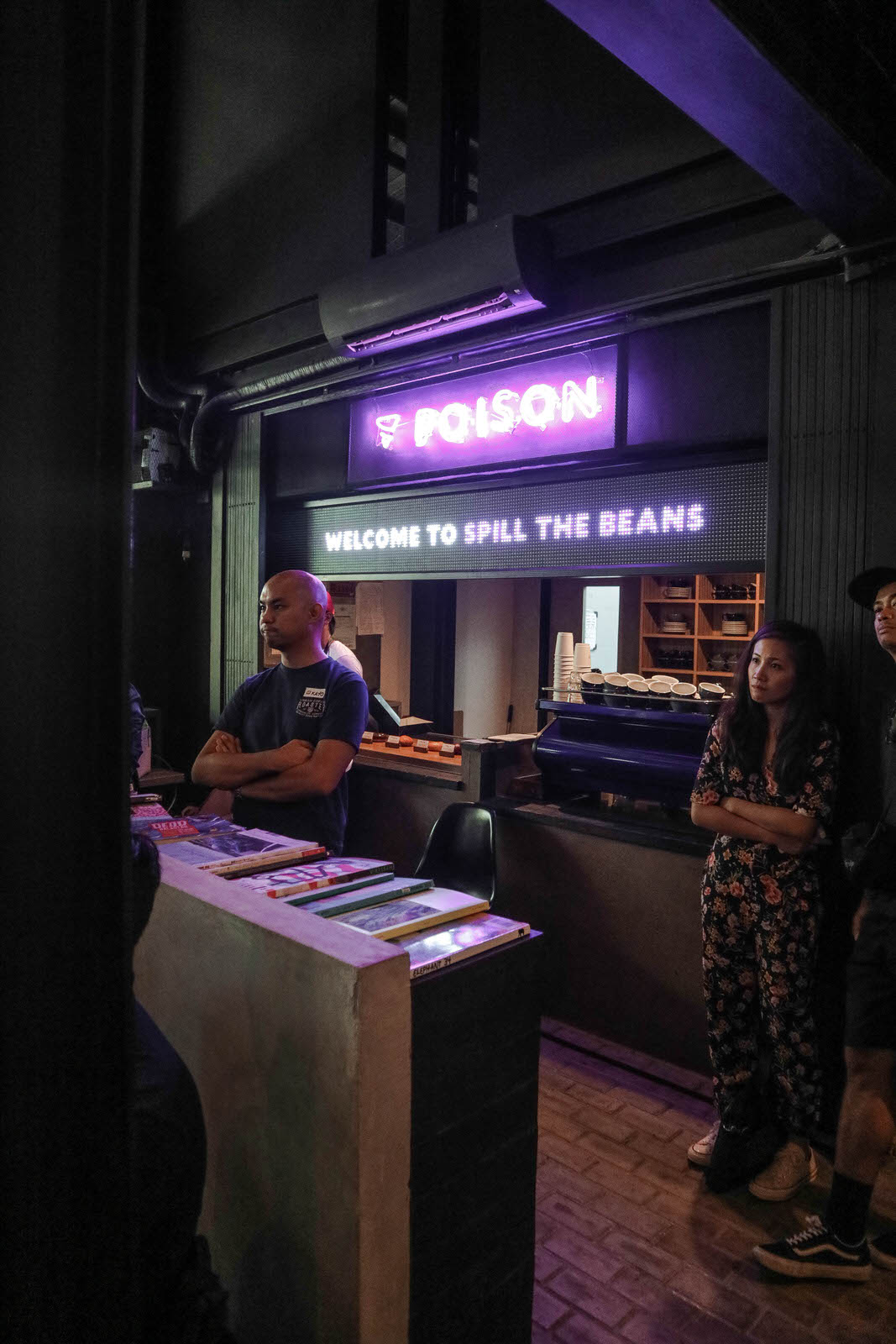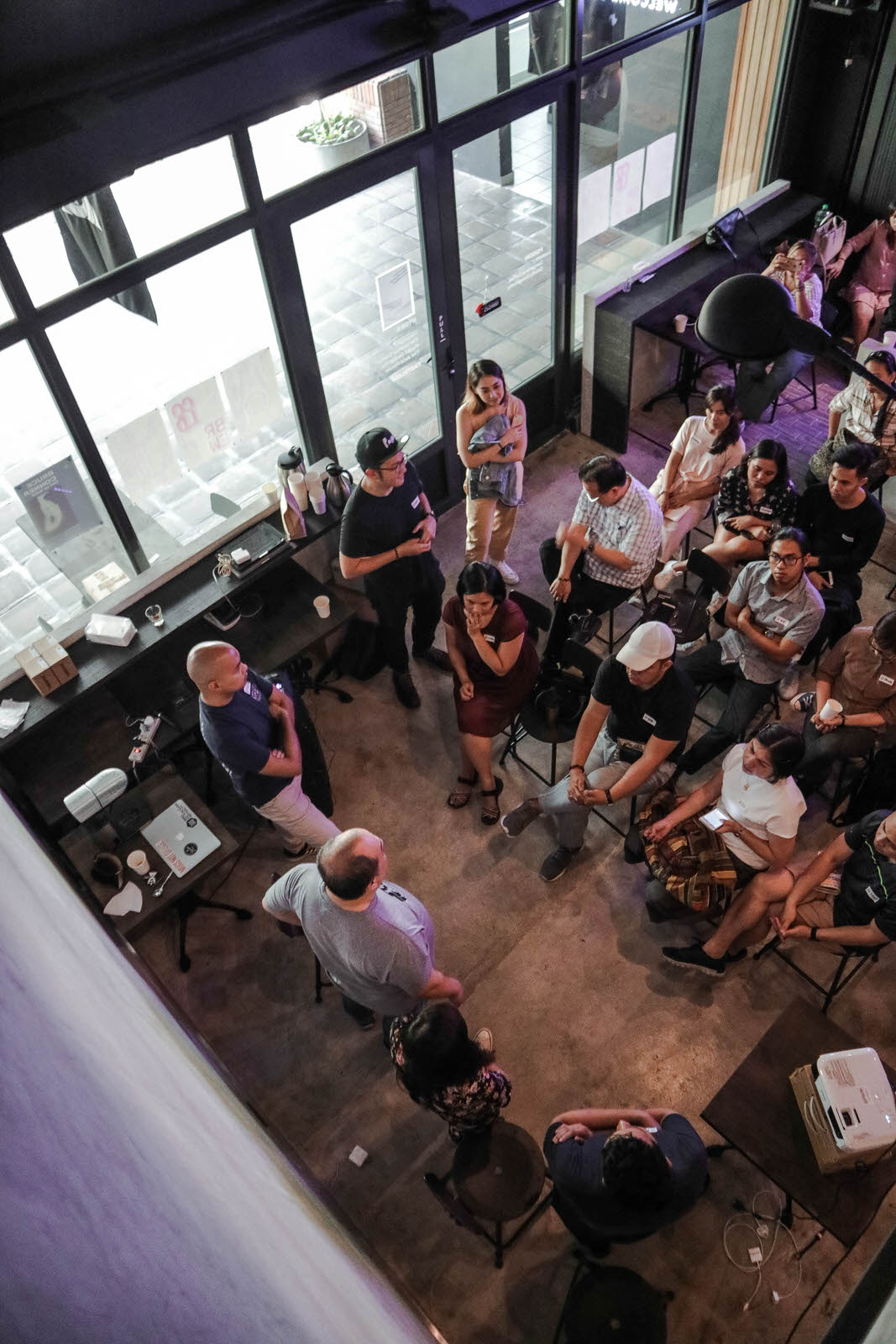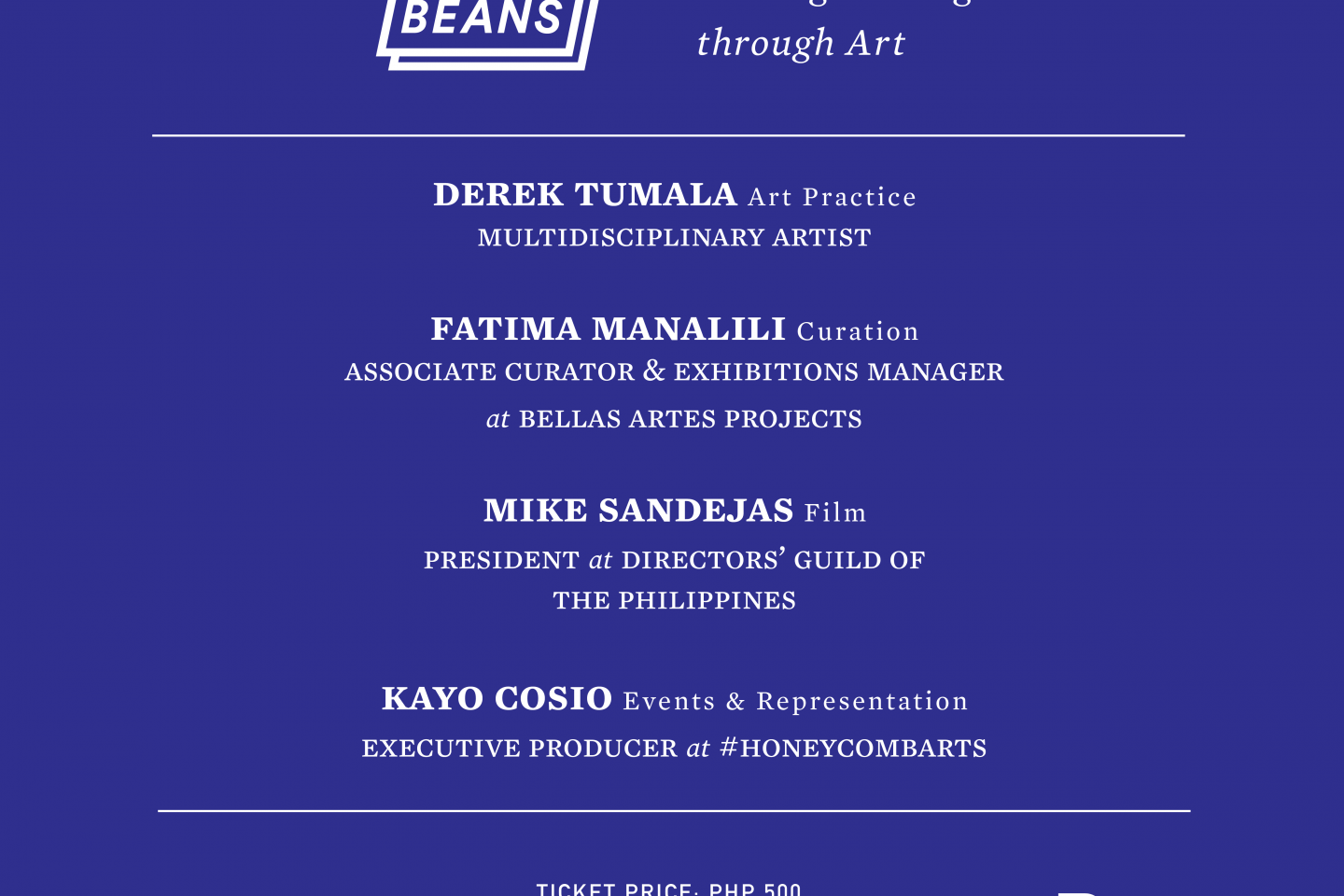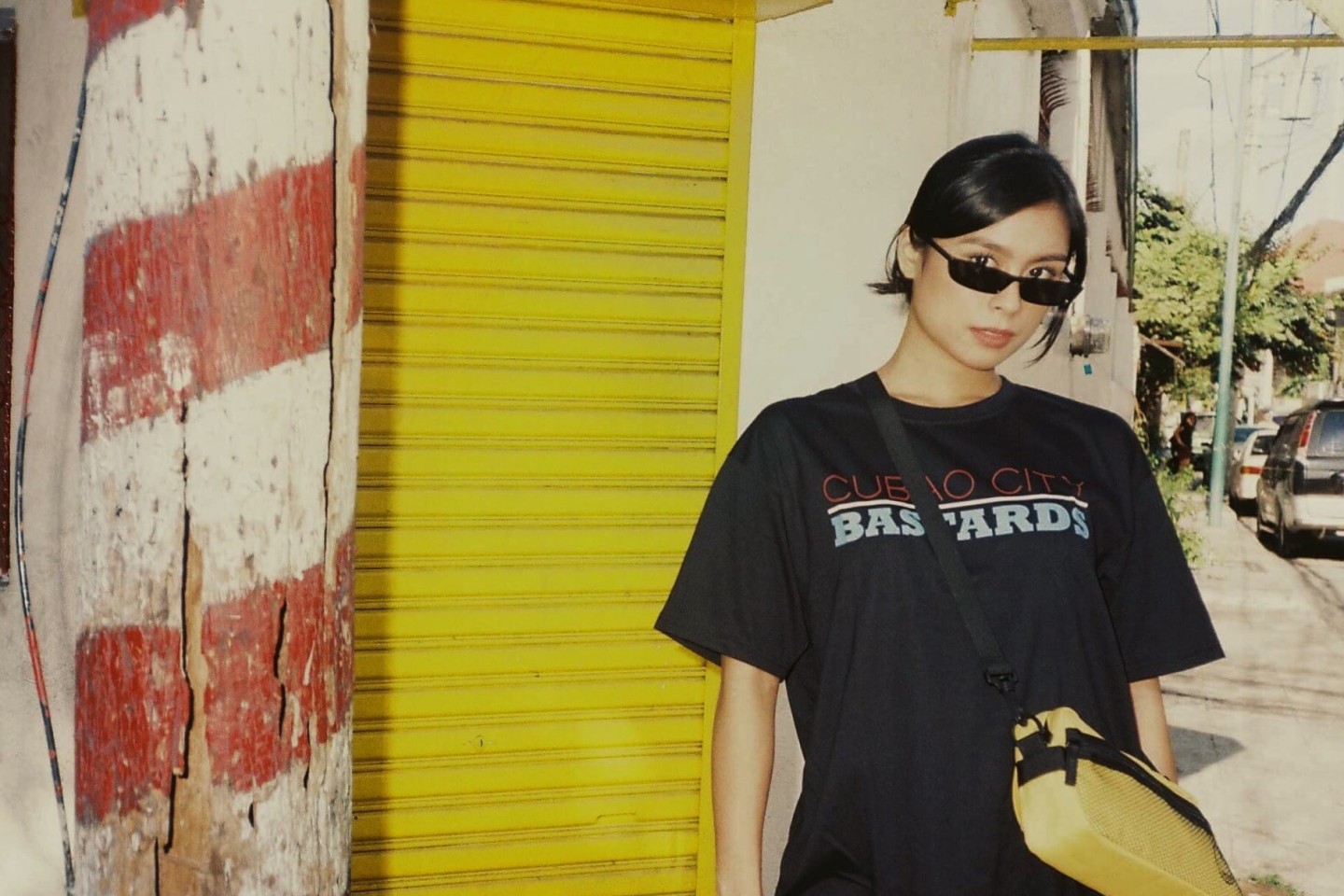On Saturday mornings, half of the world would either be sound asleep or just getting the day started. It’s the weekend after all, and there’s no better way to unwind other than in the confines of your own abode. For about 30 people however, this Saturday in particular was a different story. Last April 21, they communed for the first Spill the Beans of the year at Poison Coffee and Doughnuts.
In case you missed it, Spill the Beans is an intimate quarterly get-together hosted by Yardstick and PURVEYR. This is a platform where ideas are shared, exchanged, and challenged. Guests are in the presence of esteemed speakers who each give their thoughts on a certain topic, to be followed by a panel interview where the floor is opened for questions from the audience.
For this edition, the question we sought to answer was, “How does one make a living through art?” This could never come at a more apt time seeing as there is a bigger demand in arts recently, be it in the context of culture or industry. Add to this the ever-growing notion of the “starving artist”. This peaked our curiosity and prompted us to have a closer look into the matter. We invited four distinguished individuals who work in different facets of the industry to give us their two cents.
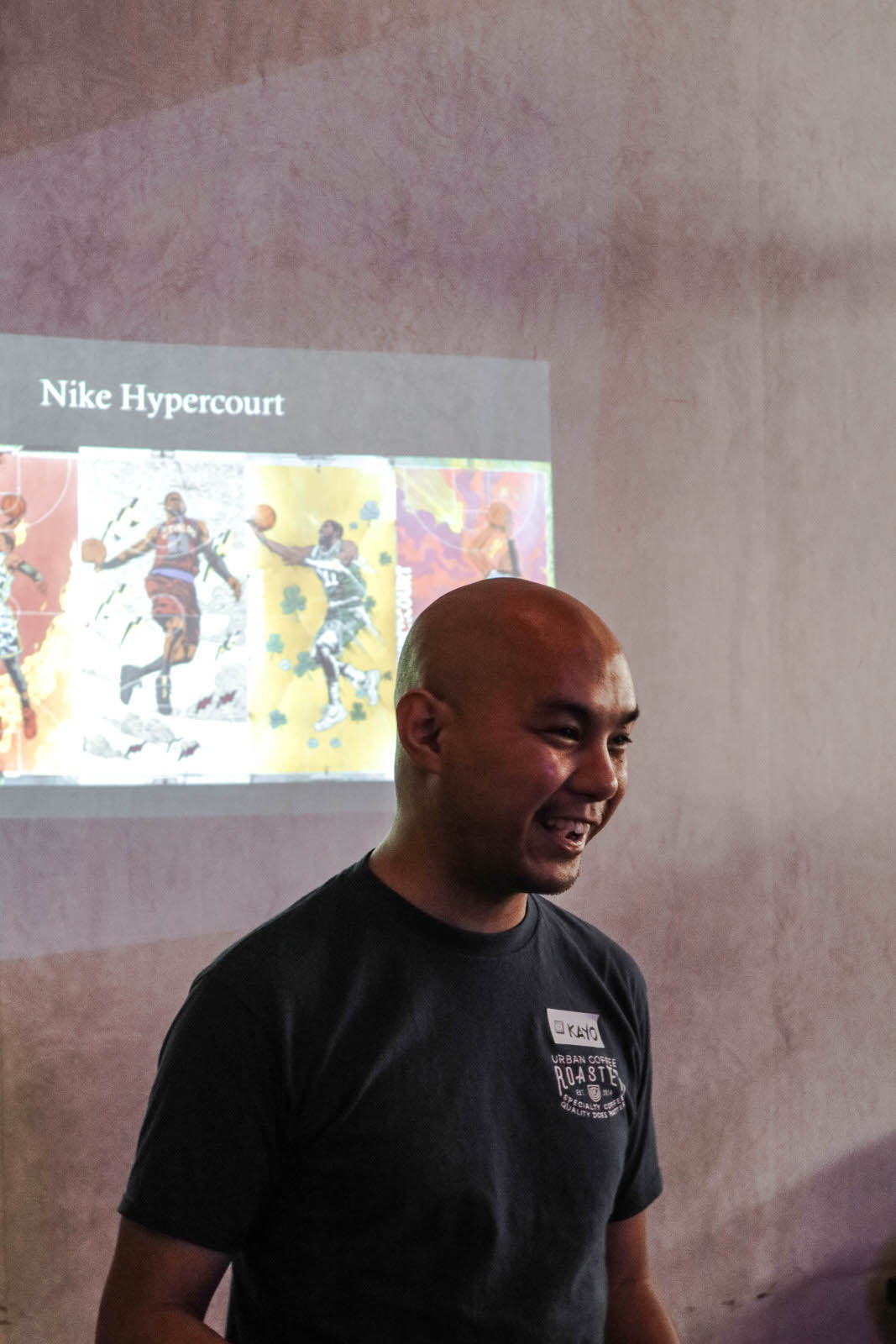
Events and Representation: Kayo Cosio, Executive Producer at #HoneyCombArts
#HoneyCombArts is the art consultancy arm under the umbrella of Honey Comb Communications. These are the talented guys behind projects like ArtBGC, Nike Hypercourt, and Ayala Malls Love’m All Hearts. For Kayo, he believes that working with clients who like and appreciate art is important. As for pricing, he advises the audience to follow these guidelines: don’t be afraid to take work for cheap (value is not always in money, it can be converted to other things), don’t be afraid to take a pay cut, then 10 times, then after that, it’s either full price or passion project. But ultimately, he believes in making your own rules, and never breaking them.

Film: Mike Sandejas, President at Directors Guild of the Philippines
Mike has had a storied 21 years in the film industry from production assistant, to director, to producer, to current president of the Directors Guild of the Philippines. He takes a more realistic approach to the state of film, noting that our country’s film industry is in need of more education, quality, and support to thrive and survive. He also reiterates the fact that film is a discipline and making money in the industry is indeed a hard feat. He ended his lecture by challenging aspiring artists and filmmakers in the room to have a vision that’s larger than life itself—one that’s at par with the rest of the world.

Illustration and Graphic Design: Raizel Go, Art Director at Publicis JimenezBasic and Co-owner at BRKLSS
She punches in the hours, working for one of the largest creative agencies in the country. However, in her free time, she goes by the alias Raise Hell, her artist alter ego whose personal design is defined by a punk-infused world of monsters and zombies in bright colors. Based on experience, she believes in the practicality of day jobs to pay the bills. Meanwhile, to earn from art, she says it’s important to know the price of your designs. More specifically, she adds that it’s better to have a 50% minimum mark-up for sustainability purposes. Making an effort to market yourself by making some merchandise comes next. Lastly, she notes the importance of continuously honing one’s craft.

Art Practice: Derek Tumala, Transdisciplinary artist, Store owner, and Designer
Having pursued art in various mediums, one would ask how Derek Tumala can strive to do it all. A jack of all trades, Derek even shared a Venn Diagram to the audience to break down what he does. One such initiative that stood out is Mvltiverse, a project he started that plays with technology to create new forms in transcending the moving image through live performance, new media, and installations. Derek attests to the notion of an artists’ responsibility to the society by creating dialogue. He concludes by inspiring the audience of the future of the art community, noting that the future of institutions are in fact, the small communities that they are made of.
As the speakers shared their passion and tales with everyone in the small space, everyone was abuzz with the endless possibilities of art. And while making a living out of art is nowhere near easy, drive and determination will go a long way. It’s important to stay on the learning curve, and to keep pushing for your initiatives and working on your visions. Soon enough, people will take notice and a sustainable means for living is bound to follow suit.

